Powder Crystals Granules Pallets Lumps Solution Calcium Chloride Anhydrous Fused Dihydrate Hexahydrate SDS of Suppliers Exporters, Manufacturers
Calcium Chloride
CAS Number: 10043-52-4, 10035-04-8, 7774-34-7 Anhydrous Fused Dihydrate Hexahydrate Powder Crystals Granules Pallets Lumps Solution BP Ph Eur USP Reagent FCC Food Grade Suppliers Exporters, Manufacturers
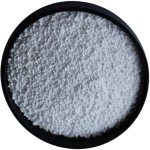
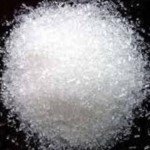
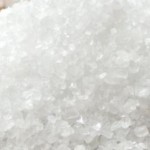
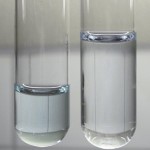
Please visit Main Page of Calcium Chloride BP Ph Eur USP Reagent FCC Food Grade Manufacturers.
Calcium Chloride SDS, Safety Data Sheet
MSDS Sheet 09-May-22
1. Product Identification
Product Name & Other Names: Calcium dichloride or Calcium chloride.
CAS No.: Calcium Chloride Anhydrous CAS Number 10043-52-4; Calcium Chloride Dihydrate CAS Number 10035-04-8; Calcium Chloride Hexahydrate 7774-34-7
EINECS EC Number: 233-140-8.
Relevant uses and uses advised against (if any): Laboratory & Industrial use only.
Supplier: As per letterhead.
2. Hazards Identification
GHS, Globally Harmonized System Classification in accordance with 29 CFR 1910
Classification according to Regulation (EC) No 1272/2008
Skin irritation (Category 2), H315
Serious eye damage/eye irritation Category 2A, H319
Specific target organ toxicity, single exposure; Respiratory tract irritation Category 3, H335
Labeling according to GHS & Regulation (EC) No 1272/2008
GHS Label Elements 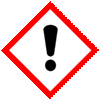 Irritant |
Signal Words: Warning
Hazard statements:
H315: Causes skin irritation.
H319: Causes serious eye irritation.
H335: May cause respiratory irritation.
Precautionary statements:
P261: Avoid breathing dust/ fume/ gas/ mist/ vapors/ spray.
P262: Do not get in eyes, on skin, or on clothing.
P264: Wash skin thoroughly after handling.
P280: Wear protective gloves/protective clothing/eye protection/face protection.
P362: Take off contaminated clothing and wash before reuse.
P302+P352: IF ON SKIN: Wash with soap and water.
P305+P351+P338: IF IN EYES: Rinse cautiously with water for several minutes. Remove contact lenses, if present and easy to do. Continue rinsing.
P332+P313: If skin irritation occurs: Get medical advice/attention.
P337+P313: If eye irritation persists: Get medical advice/ attention.
3. Composition/Information on Ingredients
Product Name & Other Names: Calcium dichloride or Calcium chloride.
CAS No.: Calcium Chloride Anhydrous CAS Number 10043-52-4; Calcium Chloride Dihydrate CAS Number 10035-04-8; Calcium Chloride Hexahydrate 7774-34-7
EINECS EC Number: 233-140-8.
4. First Aid Measures
Always seek medical attention after first aid measures are provided.
Inhalation: Remove to fresh air. If not breathing, give artificial respiration. If breathing is difficult, give oxygen. Get medical attention.
Ingestion: Never give anything by mouth to an unconscious person. Get medical attention.
Skin Contact: Wipe off excess material from skin then immediately flush skin with plenty of water for at least 15 minutes. Remove contaminated clothing and shoes. Get medical attention. Wash clothing before reuse. Thoroughly clean shoes before reuse.
Eye Contact: Immediately flush eyes with plenty of water for at least 15 minutes, lifting lower and upper eyelids occasionally. Get medical attention immediately.
Note to Physician: Symptomatic and supportive treatment is recommended.
5. Fire Fighting Measures
Flammability of the Product: Non-flammable.
Explosion: Not considered to be an explosion hazard.
Fire Extinguishing Media: Use any means suitable for extinguishing surrounding fire.
Extinguishing Media Not recommended: None specified.
Extinguishing Media Not recommended: Avoid using solid water jet as it may scatter the fire.
Special Information: In the event of a fire, wear full protective clothing and NIOSH-approved self-contained breathing apparatus with full face piece operated in the pressure demand or other positive pressure mode. At elevated temperatures under fire conditions, it may produce toxic or irritating fumes. Fire-extinguishing work is done from the windward and the suitable fire-extinguishing method according to the surrounding situation is used.
6. Accidental Release Measures
Personal precautions, protective equipment, and emergency procedures: Ventilate area of leak or spill. Avoid breathing dust/fumes/gas/mist/vapors/spray. Use individual protective equipment (waterproof boots, suitable protective clothing, safety glasses, etc.). Do not approach facing the wind.
Environmental precautions: Do not let the product enter drains, soil, or water sources.
Methods and materials used for containment cleanup procedures and Storage: Contain spilled material. Cover with an inert, non-combustible absorbent material, (e.g., sand, earth, diatomaceous earth, vermiculite). Vacuum or sweep-up and remove to an approved disposal container. Finish cleaning by spreading water on the contaminated surface and allow evacuating as per law.
7. Handling and Storage
Precautions for safe handling: Apply according to good manufacturing and industrial hygiene practices. Ensure proper ventilation. In case of insufficient ventilation, wear suitable respiratory equipment. Wash thoroughly after handling. Do not drink, eat, or smoke while handling. Avoid contact with skin, eyes, and clothing. Minimize dust generation. Avoid breathing dust/fumes/gas/mist/vapors/spray. Use individual protective equipment (waterproof boots, suitable protective clothing, safety glasses, etc.).
Conditions for safe storage, including any incompatibilities: Store in cool, dry, and ventilated area away from heat sources and protected from sunlight in tightly closed original container. Keep air contact to a minimum. Store protected from heat, sparks and ignition sources and incompatible materials. Do not store with incompatible materials like strong oxidizing agents, methyl vinyl ether, water, zinc, bromine trifluoride, mixtures of lime and boric acid, barium chloride, and 2-furan percarboxylic acid. Moist calcium chloride and concentrated solutions can corrode steel. When exposed to the atmosphere, it will absorb water and form a solution.
8. Exposure Controls/Personal Protection
Airborne Exposure Limits: None established.
Ventilation System: A system of local and/or general exhaust is recommended to keep employee exposures as low as possible.
Personal Respirators (NIOSH Approved): For conditions of use where exposure to dust or mist is apparent and engineering controls are not feasible, a particulate respirator may be worn.
Skin Protection: Wear protective gloves and clean body-covering clothing.
Eye Protection: Use chemical safety goggles and/or full-face shield where dusting or splashing of solutions is possible. Maintain eye wash fountain and quick-drench facilities in work area.
Other Control Measures: Maintain good housekeeping in work area. Handle in accordance with good industrial hygiene and safety practice.
9. Physical and Chemical Properties
Appearance: White crystals or powder or granules or lumps.
Odor: It is odorless.
Odor threshold: Not applicable.
pH: 5.0 - 9 at 10% solution at 25C (77F)
Relative density: around 1.85
Boiling Point: > 1600C (> 2912F)
Melting Point: 176C (349 °F) for Calcium Chloride Dihydrate.
Flash point: No data found.
Auto-ignition temperature: No data found.
Decomposition temperature: No data found.
Upper/lower flammability or explosive limits: No data found.
Vapor pressure: No data found.
Vapor density: No data found.
Evaporation rate: No data found.
Flammability (solid, gas): No data found.
Partition coefficient: n-octanol/water: No data found.
Solubility: It is freely soluble in water, exothermic.
Viscosity: No data found.
Molecular Weight: Calcium Chloride Anhydrous 110.98; Calcium Chloride Dihydrate 147.02 Calcium Chloride Hexahydrate 219.08
Chemical Formula: CaCl2 Calcium Chloride Anhydrous; CaCl2-2H2O Calcium Chloride Dihydrate; CaCl2-6H2O Calcium Chloride Hexahydrate 219.08
10. Stability and Reactivity
Stability: Stable under ordinary conditions of use and storage. Substance will pick up moisture from the air and go into solution if exposed in open containers.
Hazardous Decomposition Products: It emits toxic chlorine fumes when heated to decomposition. It may form hydrogen chloride in presence of sulfuric or phosphoric acids or with water at elevated temperatures.
Hazardous Polymerization: Will not occur.
Incompatibilities: Methyl vinyl ether, water, zinc, bromine trifluoride, mixtures of lime and boric acid, barium chloride, and 2-furan percarboxylic acid. Metals will slowly corrode in aqueous calcium chloride solutions. Aluminum (and alloys) and yellow brass will be attacked by calcium chloride.
Conditions to Avoid: Incompatibles.
11. Toxicological Information
Toxicity to Animals: Oral rat LD50: 2301 mg/kg on Anhydrous CaCl2 basis.
Carcinogenicity: No component of this product present at levels greater than or equal to 0.1% is identified as probable, possible or confirmed human carcinogen by IARC.
Mutagenic Effects: No data found.
Teratogenic Effects: No data found.
Developmental Toxicity: No data found.
Reproductive Effects: No data found.
12. Ecological Information
Environmental Toxicity: The material is not considered as environmental hazard.
Environmental Fate: Not biodegrade or bio accumulate.
Results of PBT and vPvB assessment: This substance/mixture contains no components considered to be either persistent, bioaccumulative and toxic (PBT), or very persistent and very bioaccumulative (vPvB) at levels of 0.1% or higher.
13. Disposal Considerations
Whatever cannot be saved for recovery or recycling should be managed in an appropriate and approved waste disposal facility.
14. Transport Information
DOT USA, TDG Canada & ADR/RID Europe: Not controlled goods.
IATA/ICAO: Not controlled goods.
IMDG/IMO: Not controlled goods.
15. Regulatory Information
USA:
SARA 311/312 Hazards: See section 2.
California Prop. 65 Components: This product does not contain any chemicals known to State of California to cause cancer, birth defects, or any other reproductive harm.
Section 16 - Additional Information
DISCLAIMER: The information and recommendations set forth herein are presented in good faith and believed correct as of the date hereof. It is compiled from various sources, and it is not necessarily all inclusive nor fully adequate in every circumstance. In addition, these suggestions should not be confused with nor followed in violation of applicable laws, regulations, rules, or insurance requirements applicable. This SDS MSDS sheet is intended only as a guide to the appropriate precautionary handling of the material by a professionally trained person using this product. Individuals receiving the information must exercise their independent judgment in determining its appropriateness for a particular purpose. This shall not constitute a guarantee for any specific product features and shall not establish a legally valid contractual relationship. In no case shall our company be liable to loss or damages by the product user.
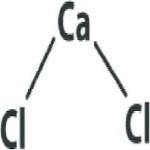
Please visit Technical Data Sheet of Calcium Chloride BP Ph Eur USP Reagent FCC Food Grade Suppliers.
Calcium Chloride CAS Number 10043-52-4, 10035-04-8, 7774-34-7 & Calcium Carbonate CAS Number 471-34-1 Supplier Exporter, Manufacturer:
Annie Chemie P Ltd
Mumbai 4000010, INDIA
With Agents and offices in UAE, USA, Europe.
e-mail: info@anniechemie.com
Copyright and Usual Disclaimer is Applicable.
May 30, 2025
Exporters to USA, Canada, UK, Europe, UAE, Nigeria, Algeria, Turkey, Mexico, Brazil, Chile, Argentina, Australia, Dubai etc.
Perfection is made up of small things and that is a big thing.
